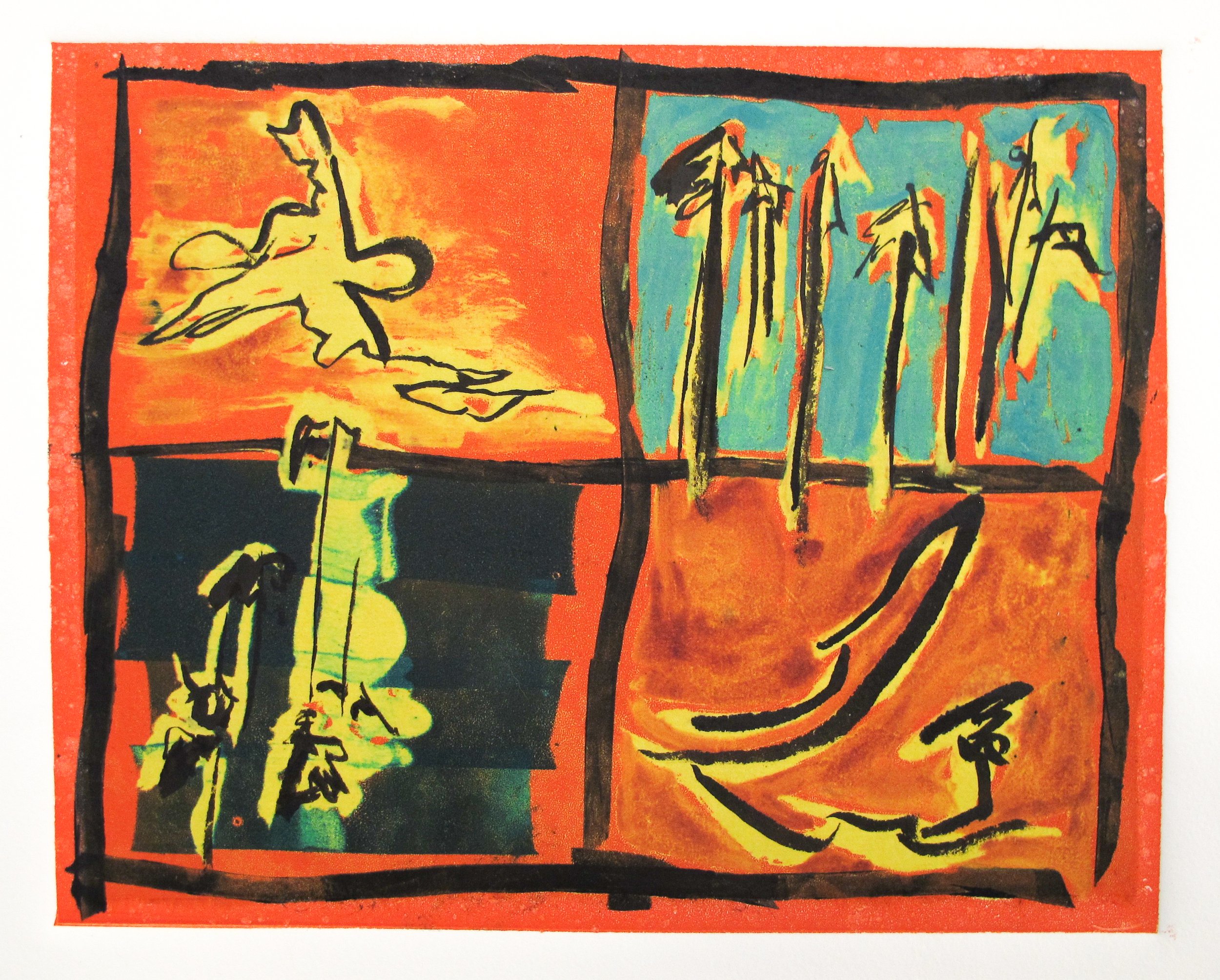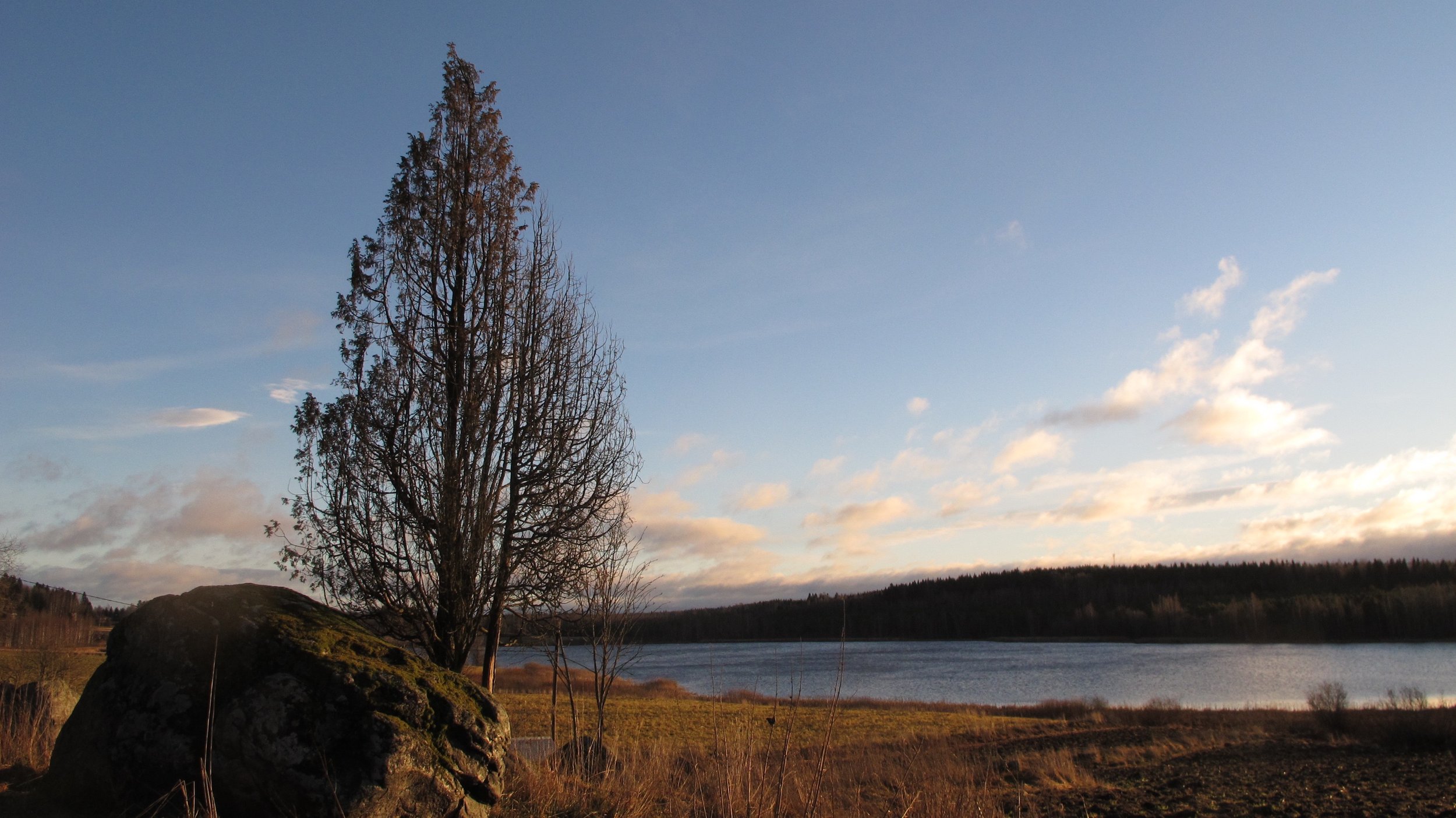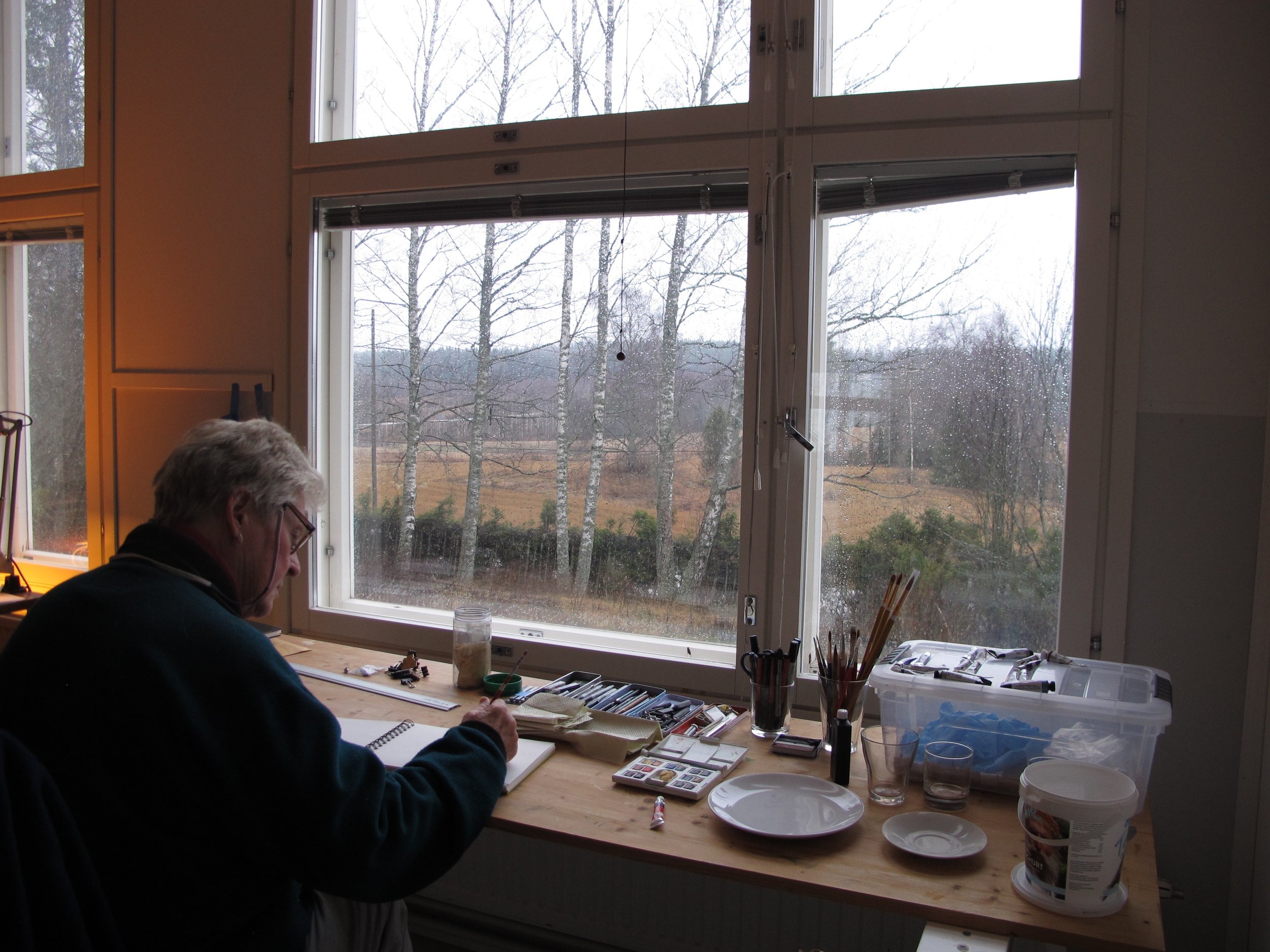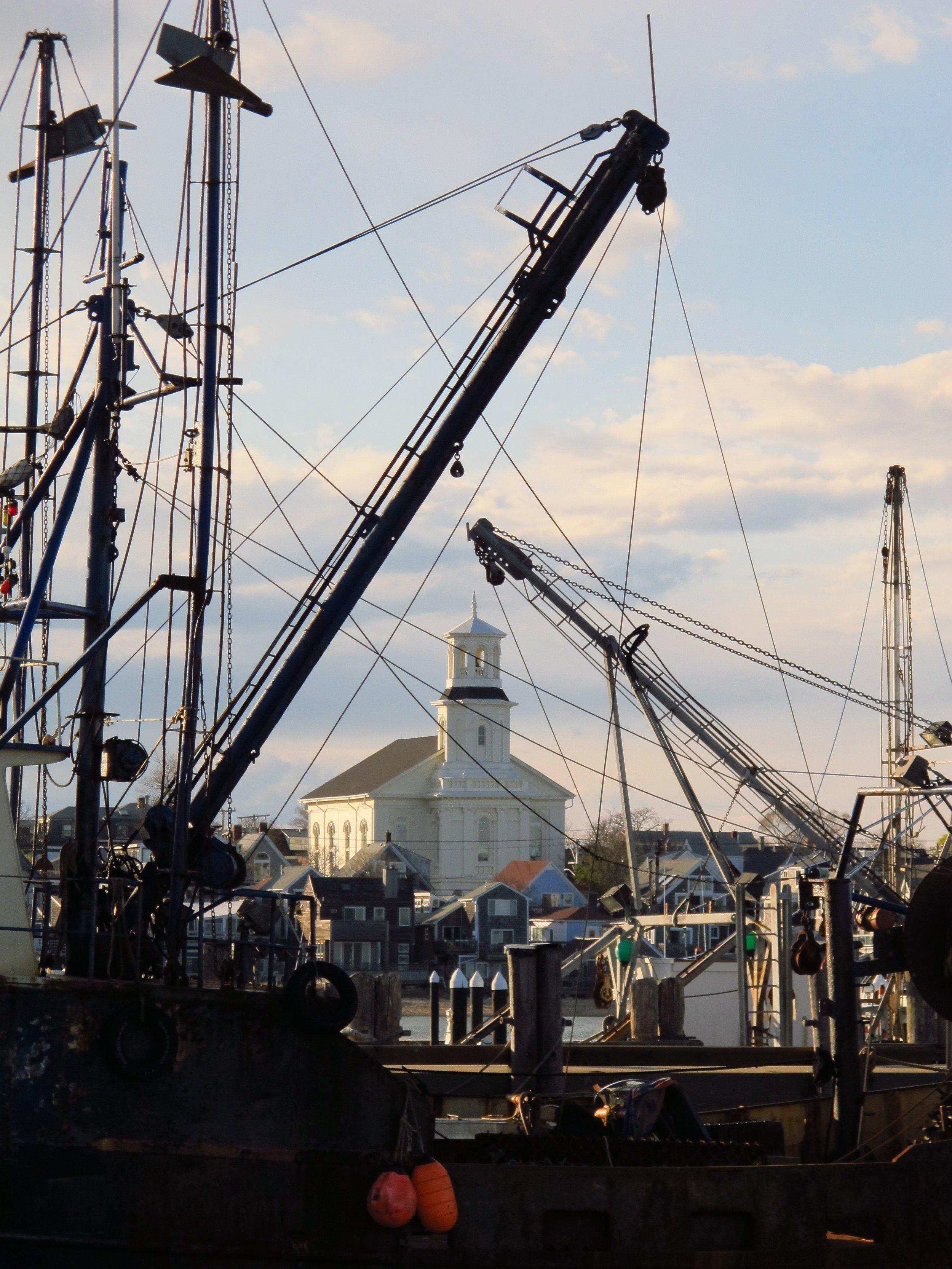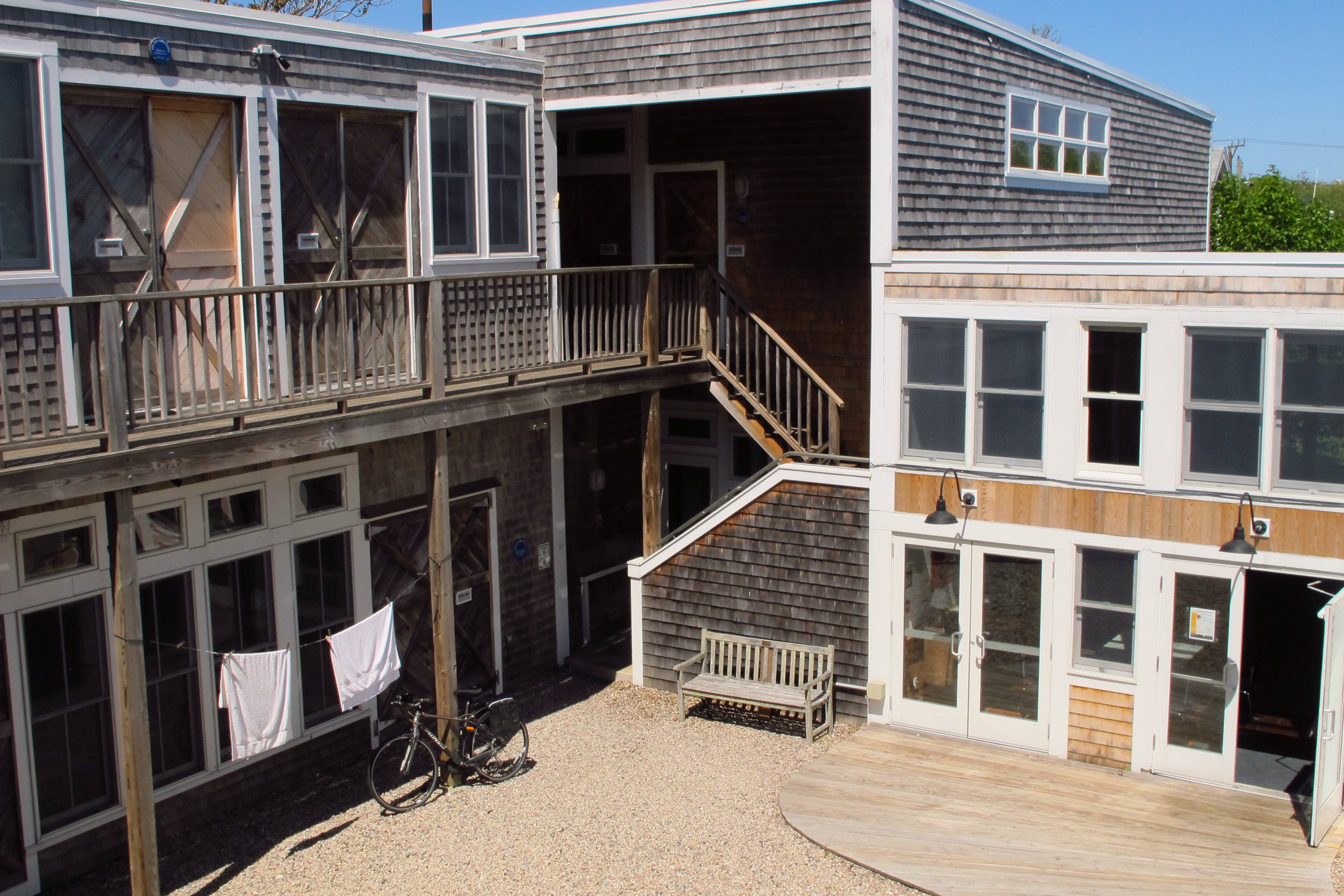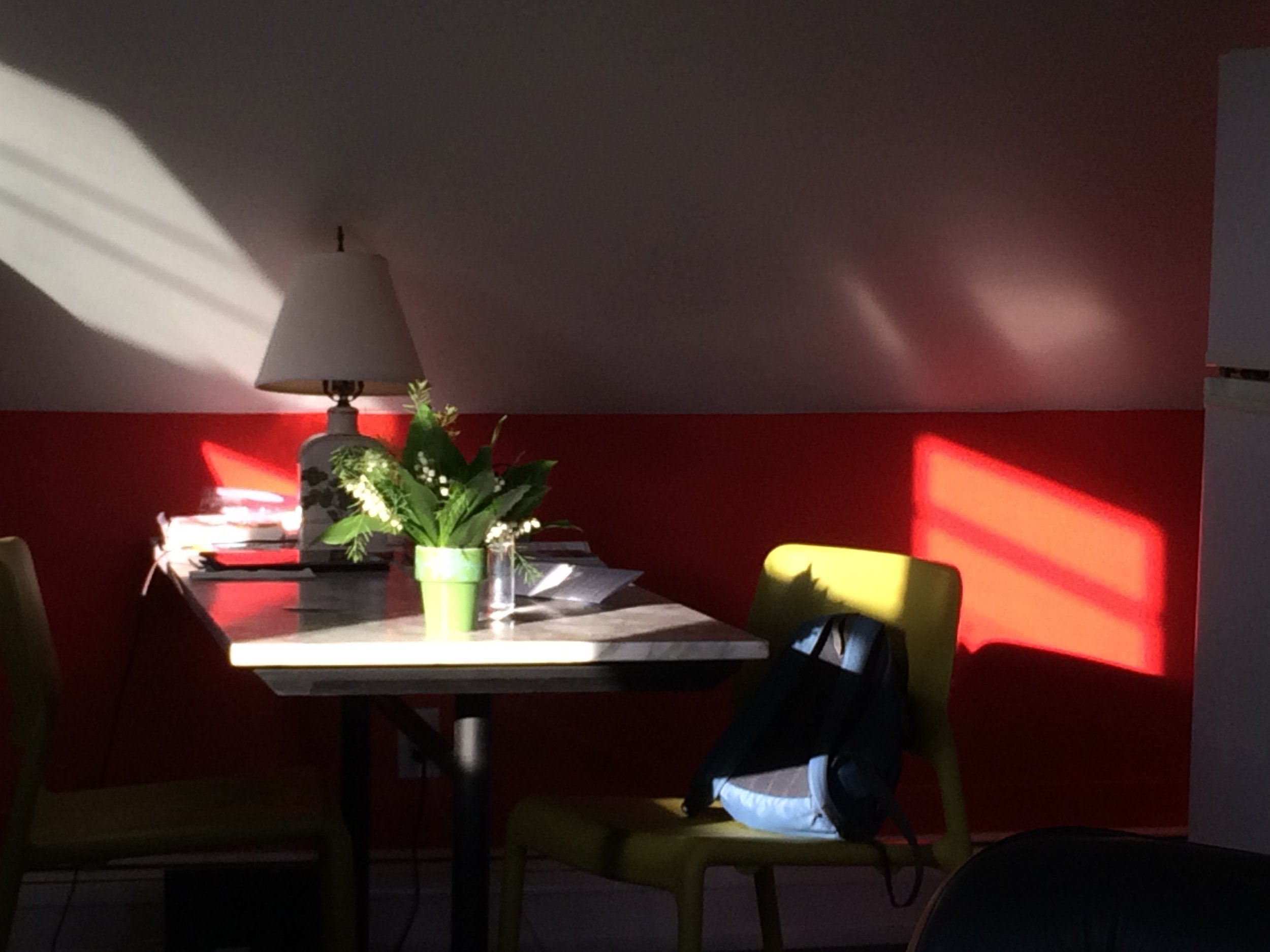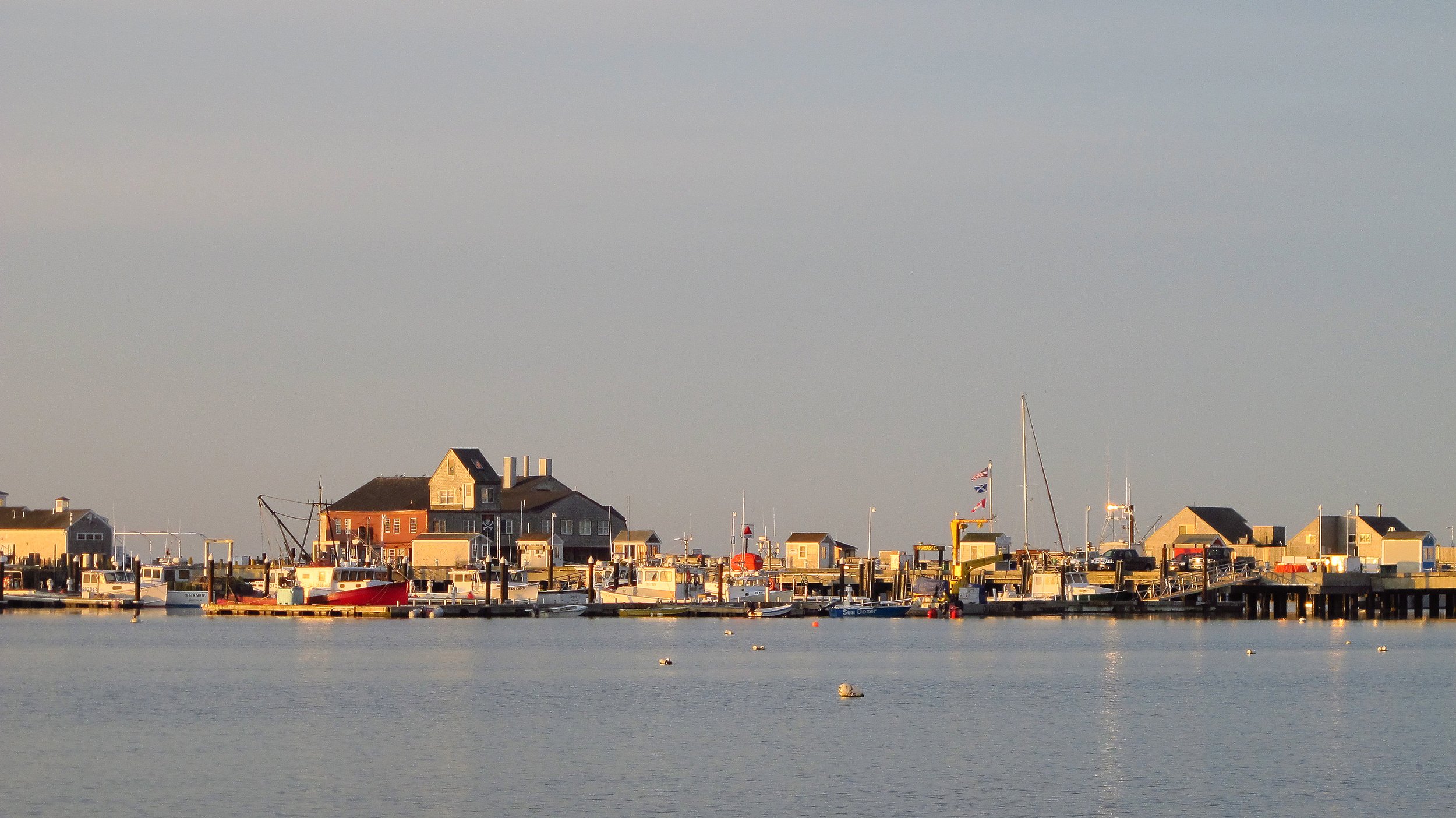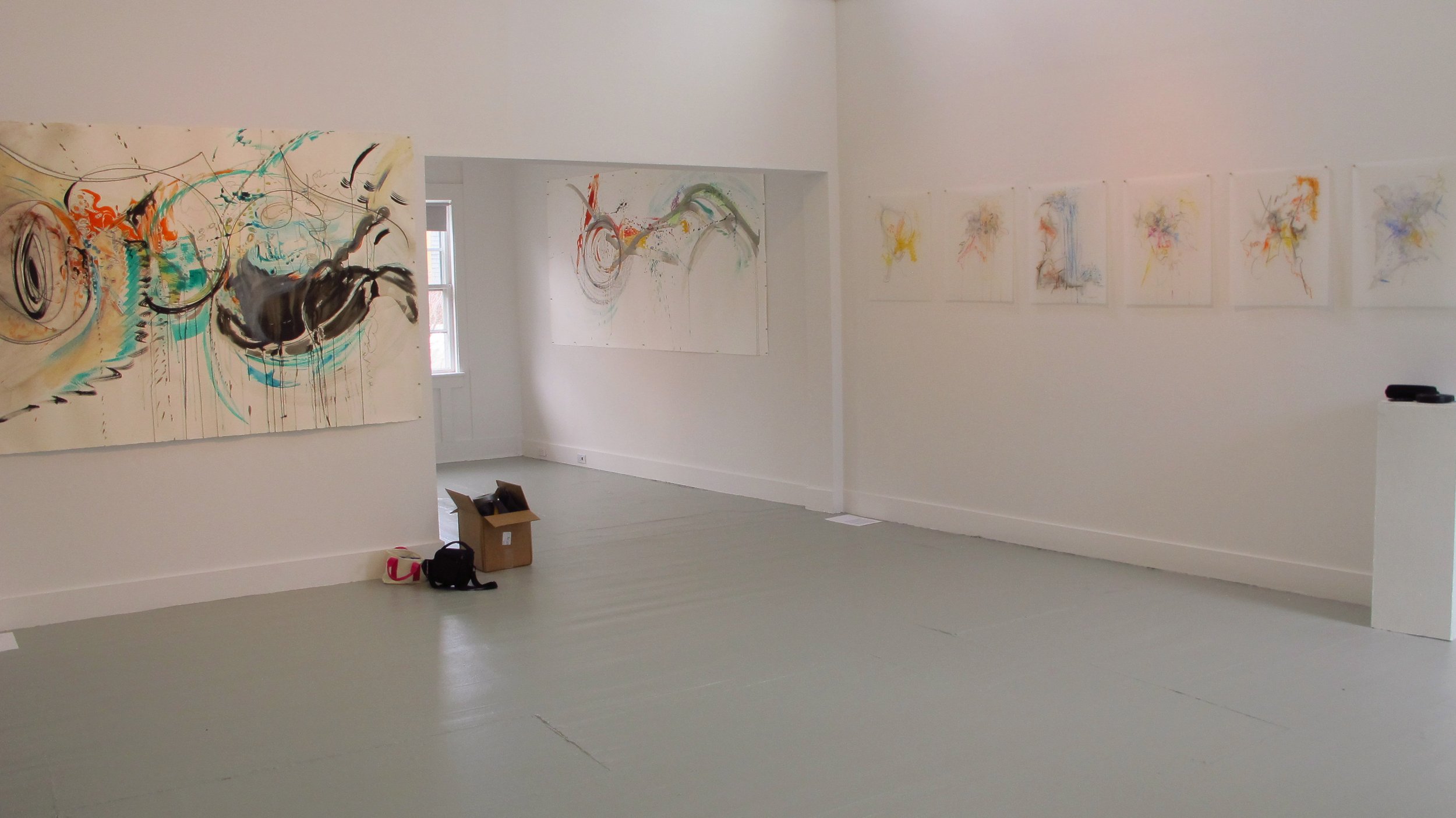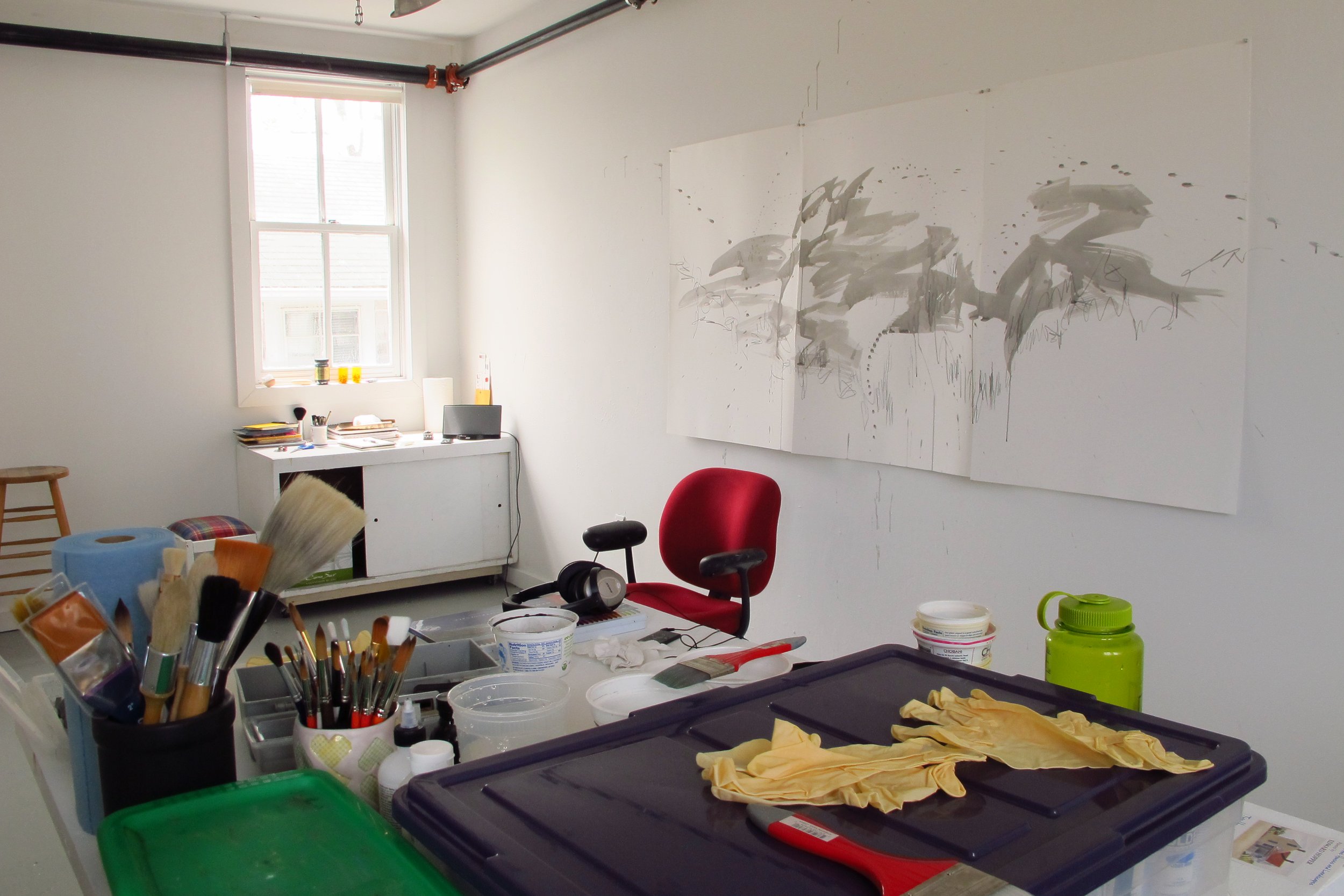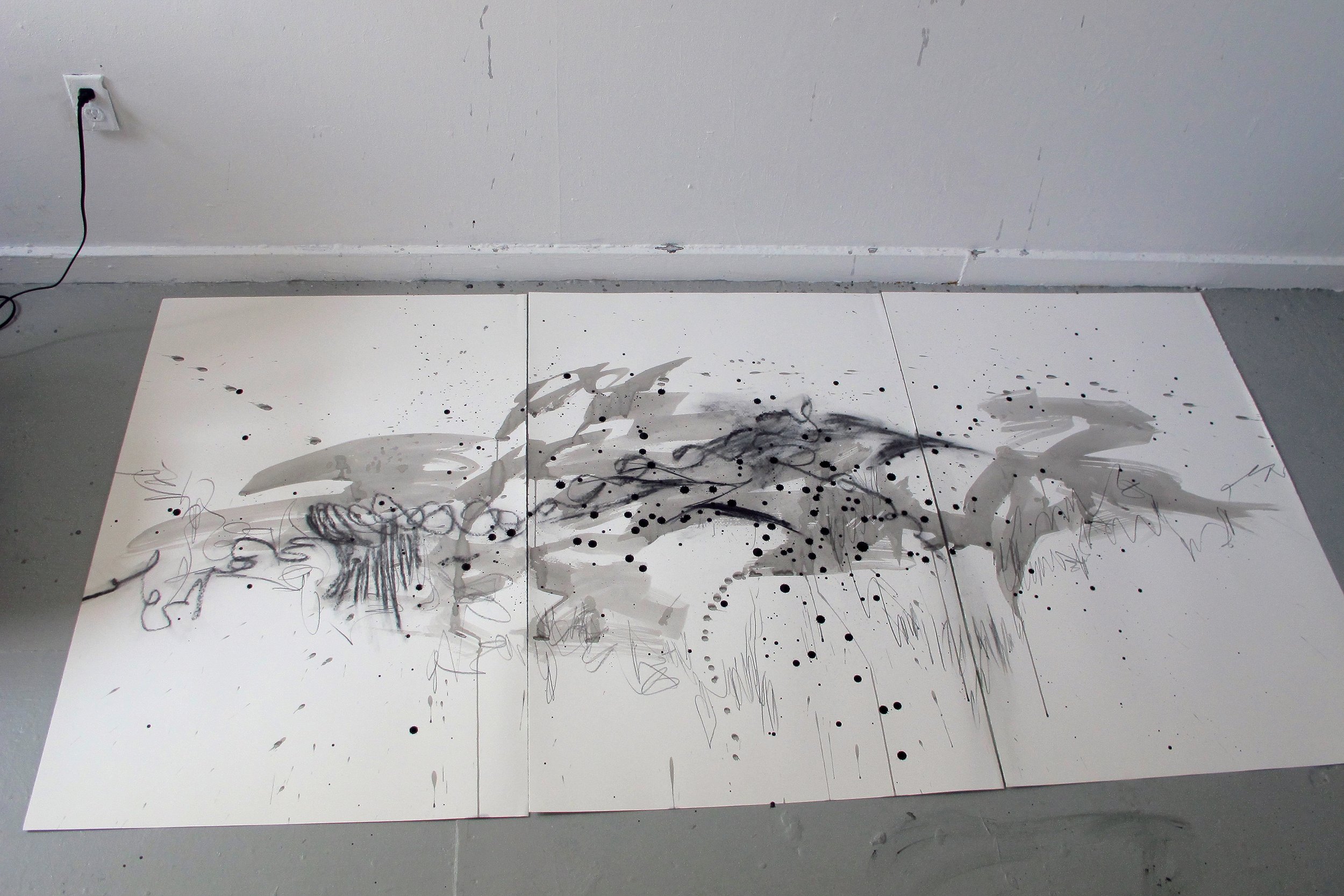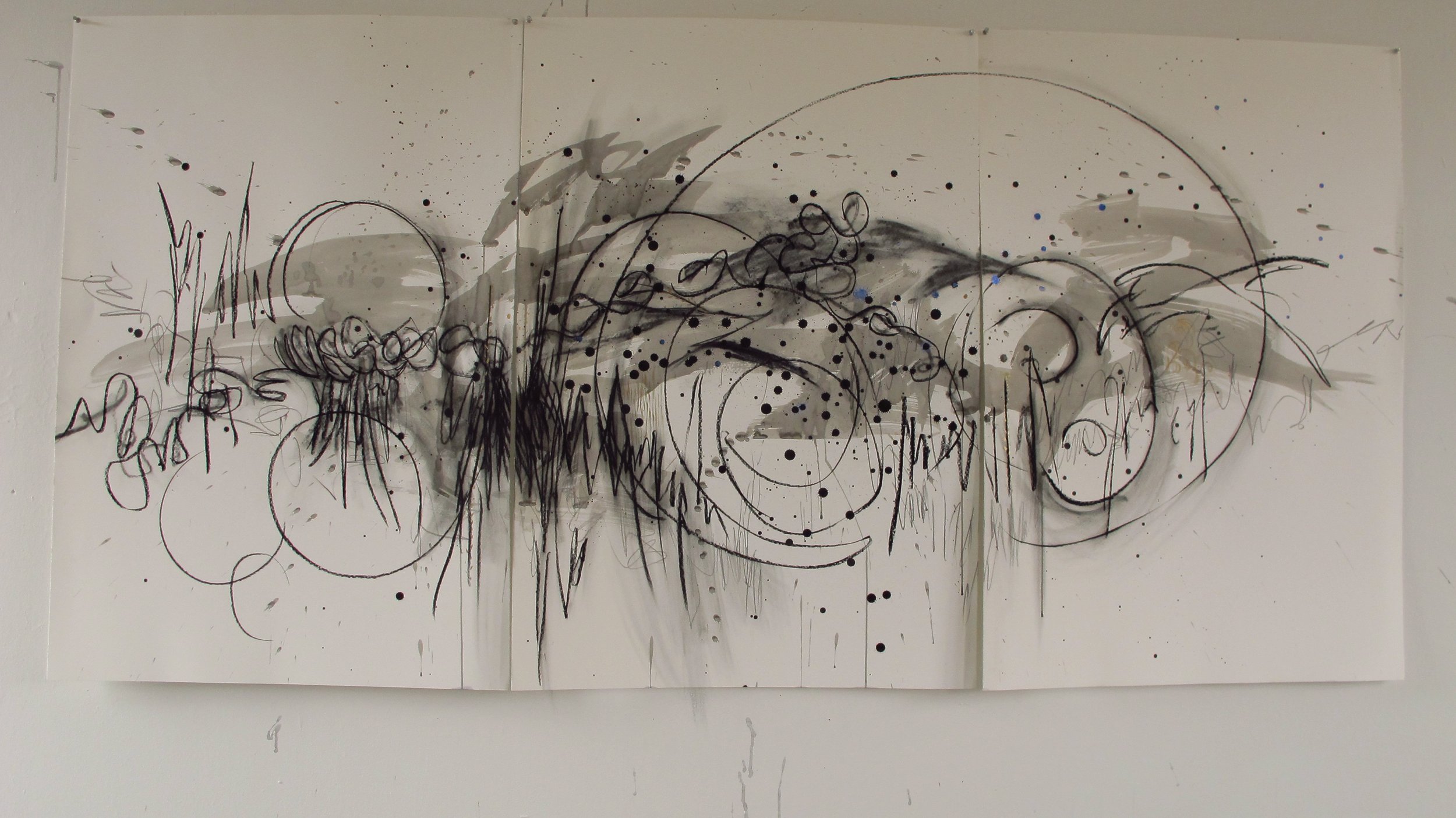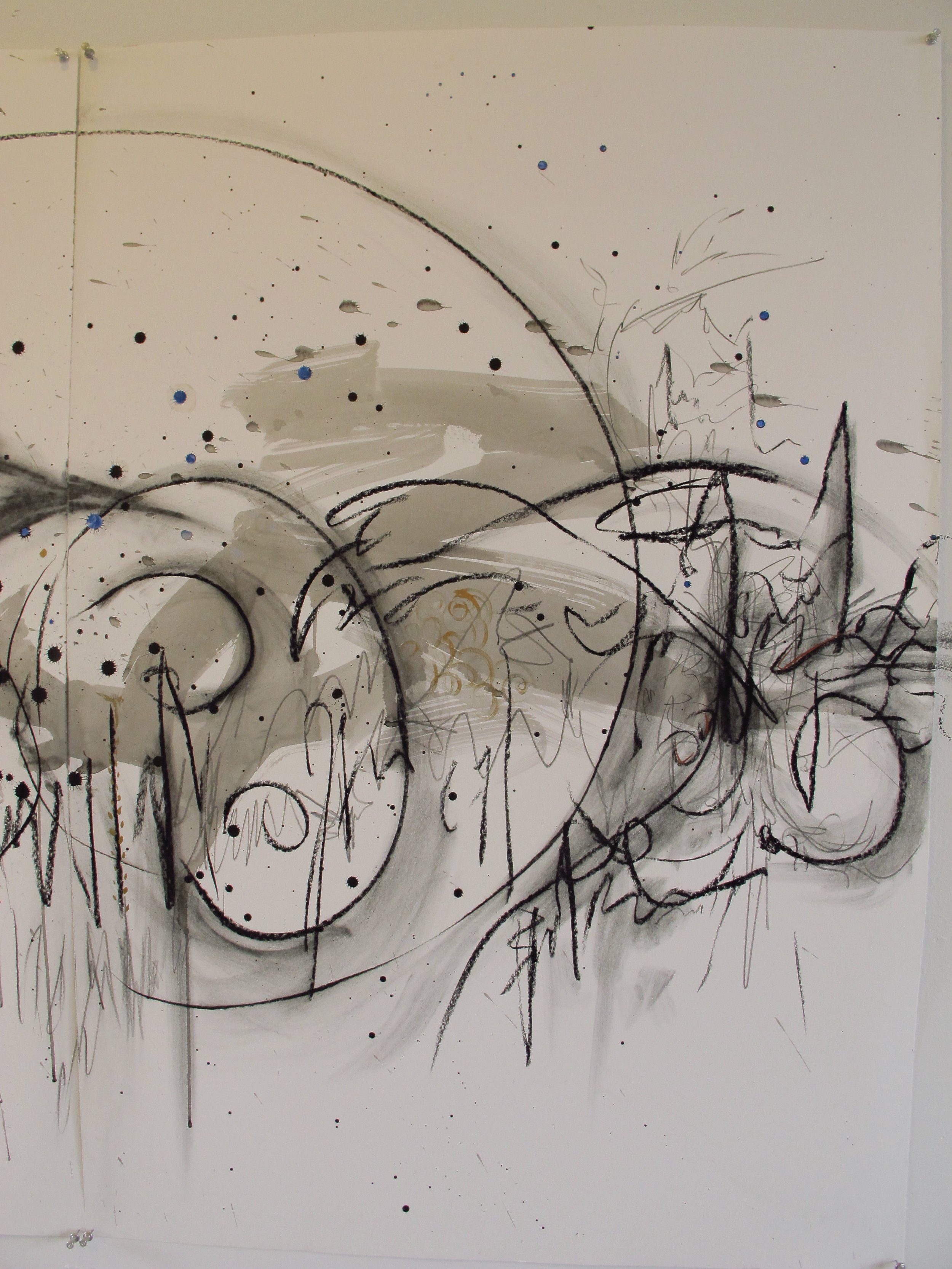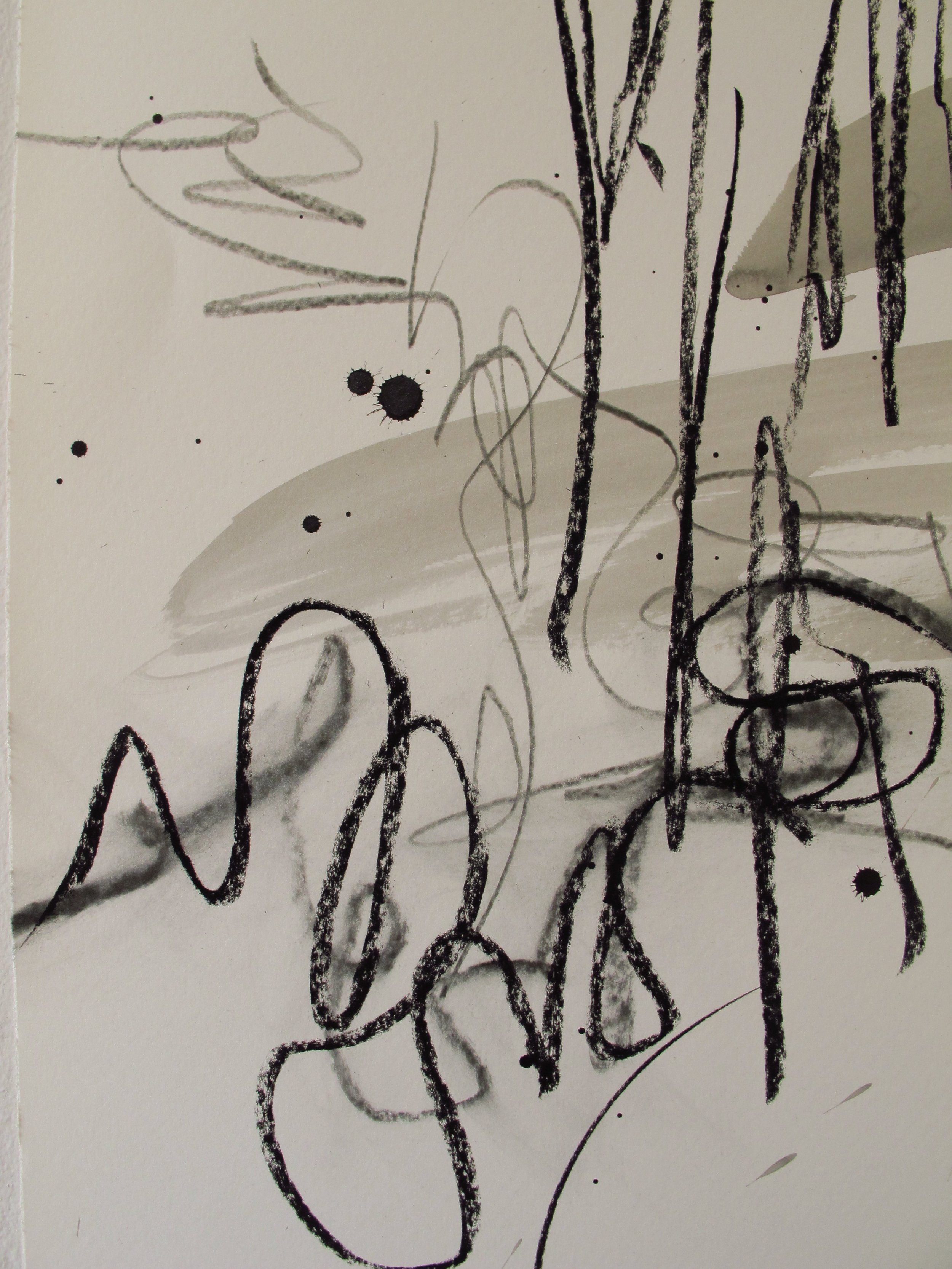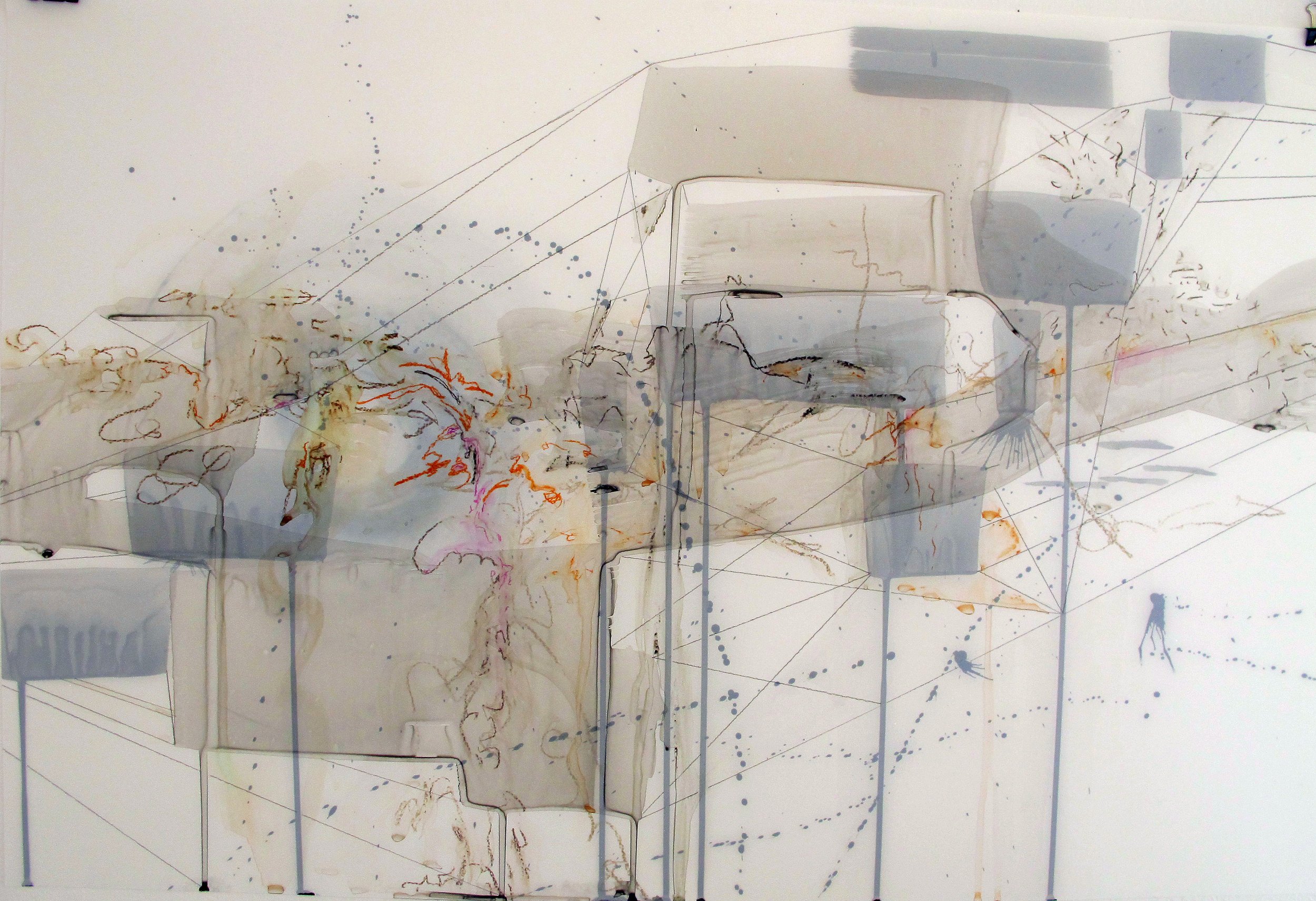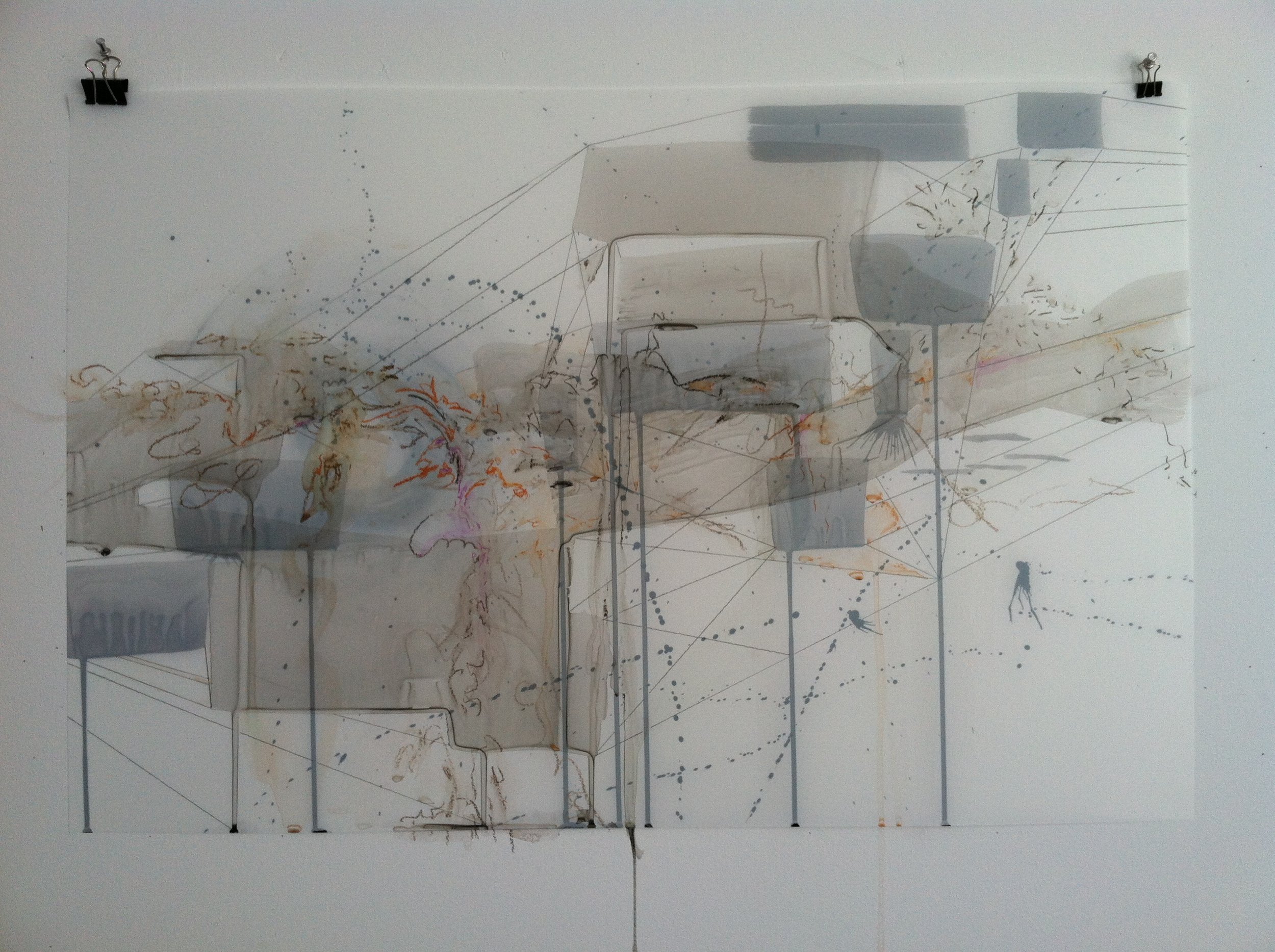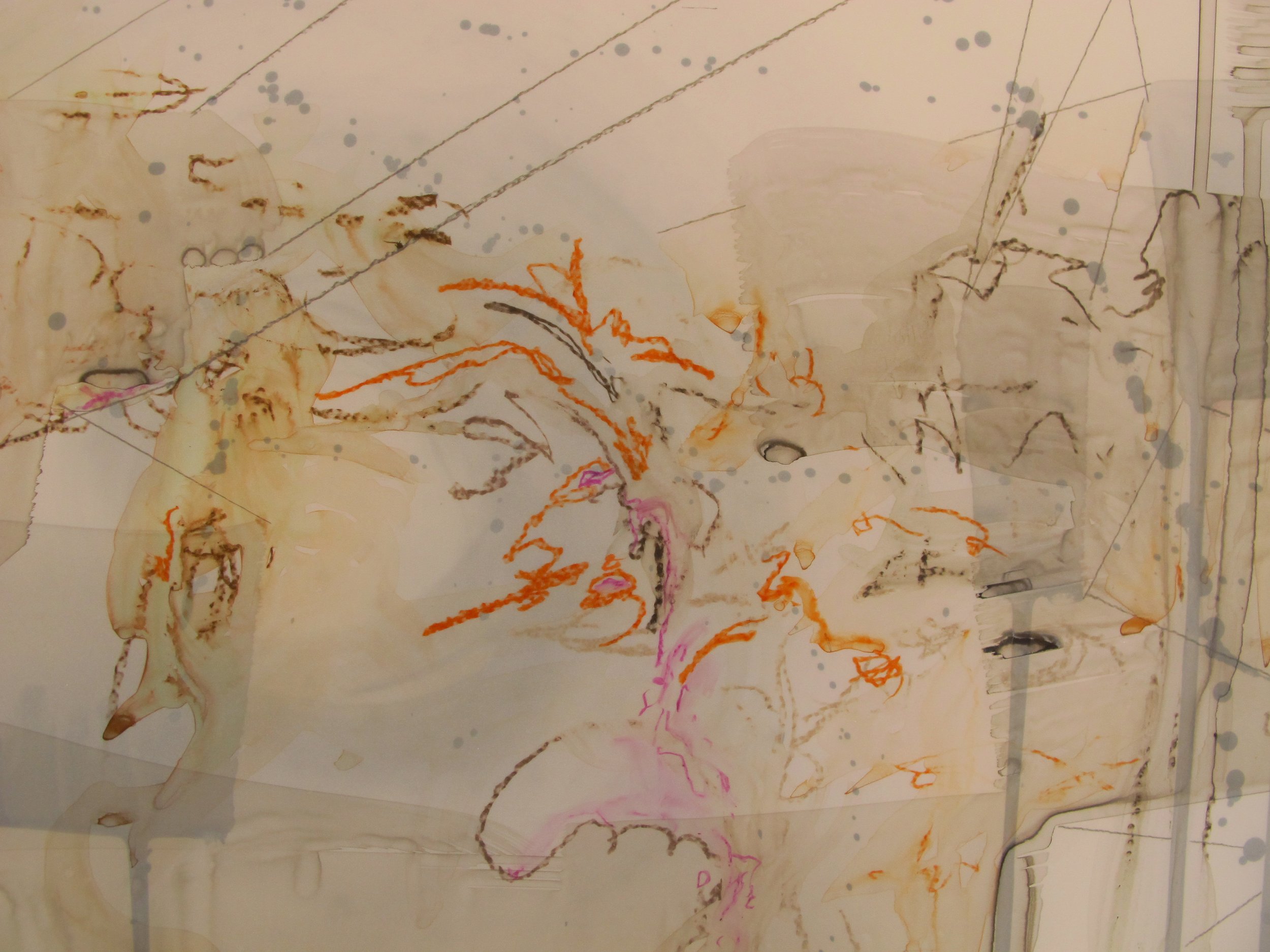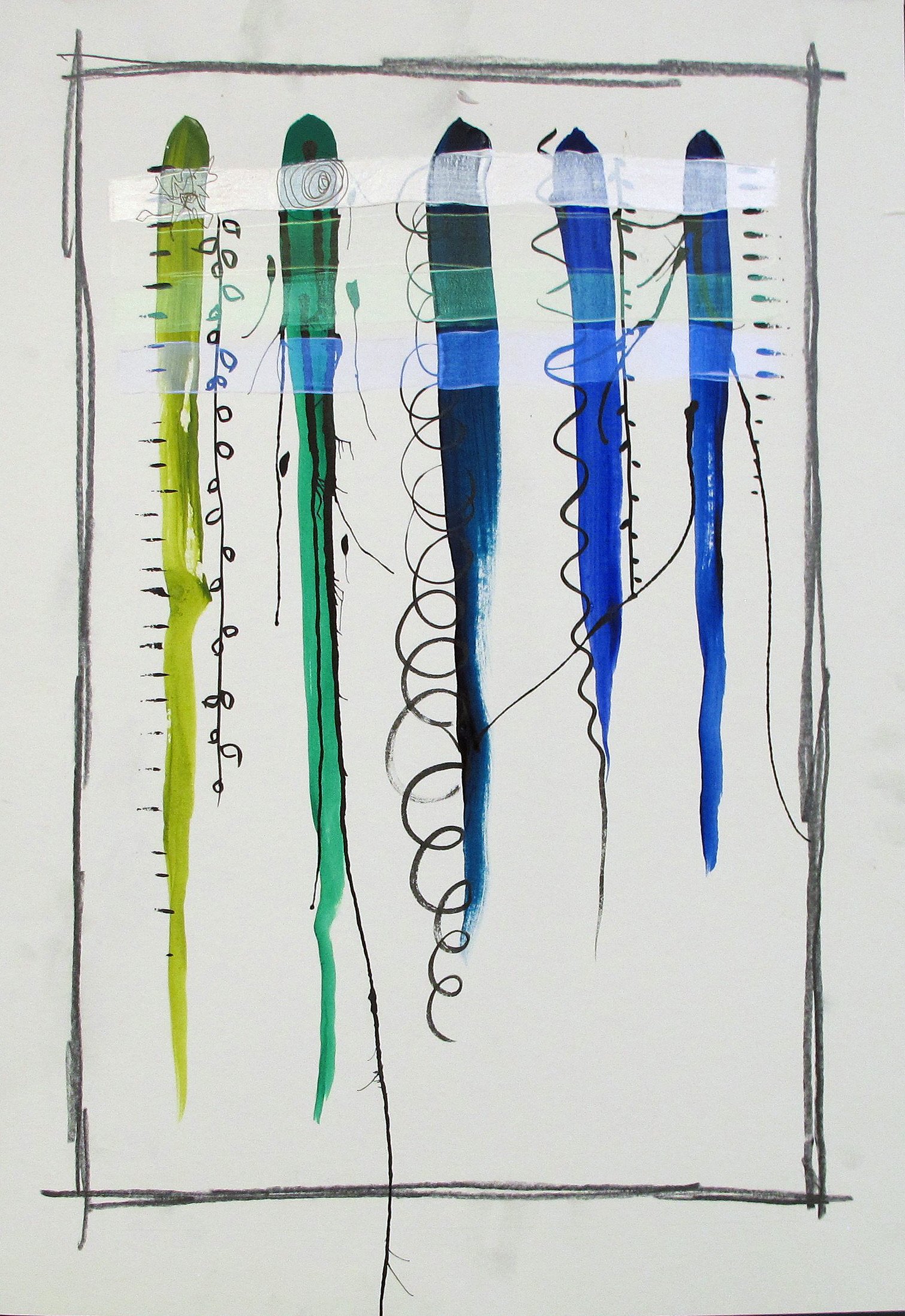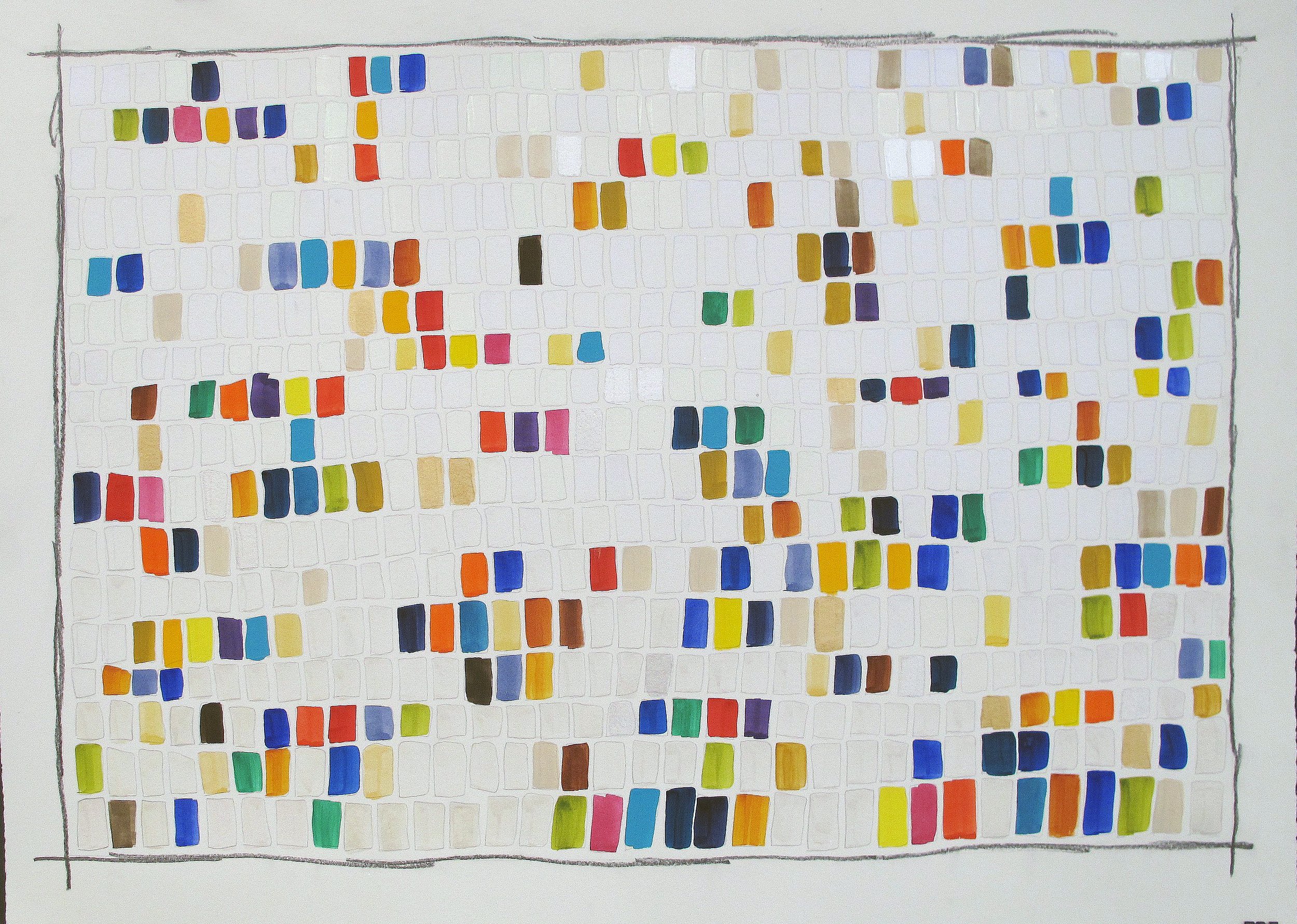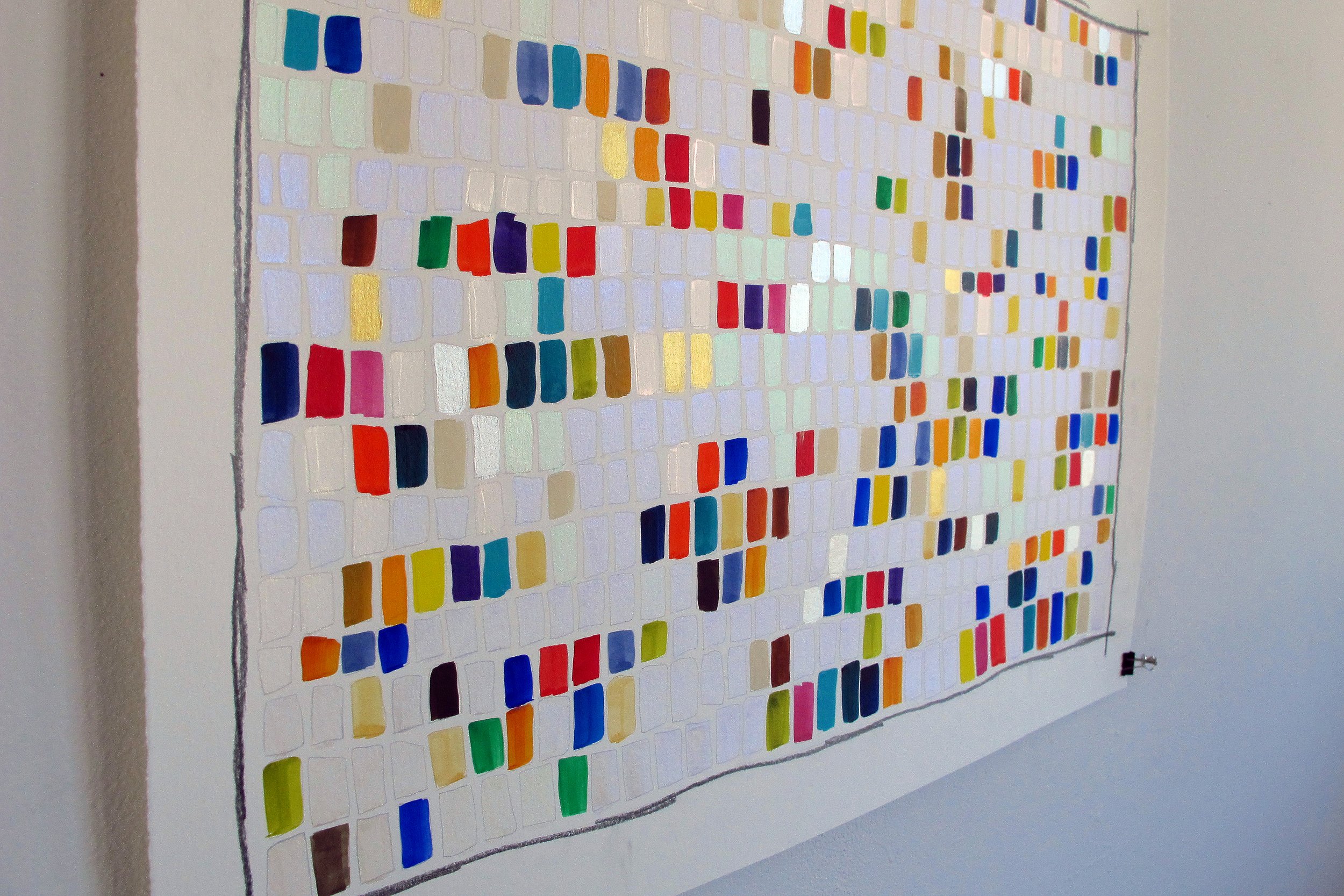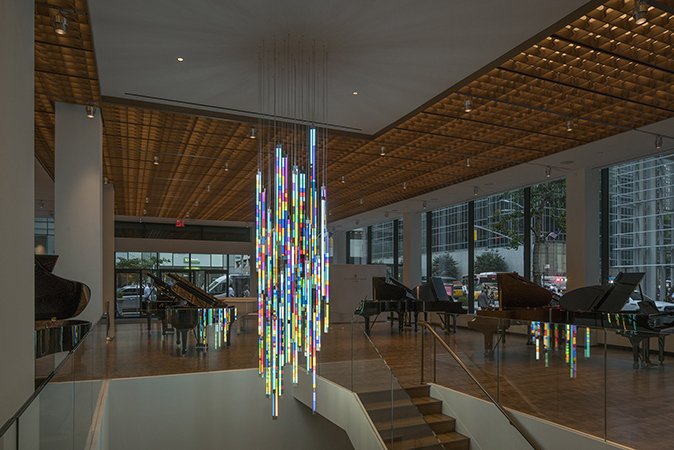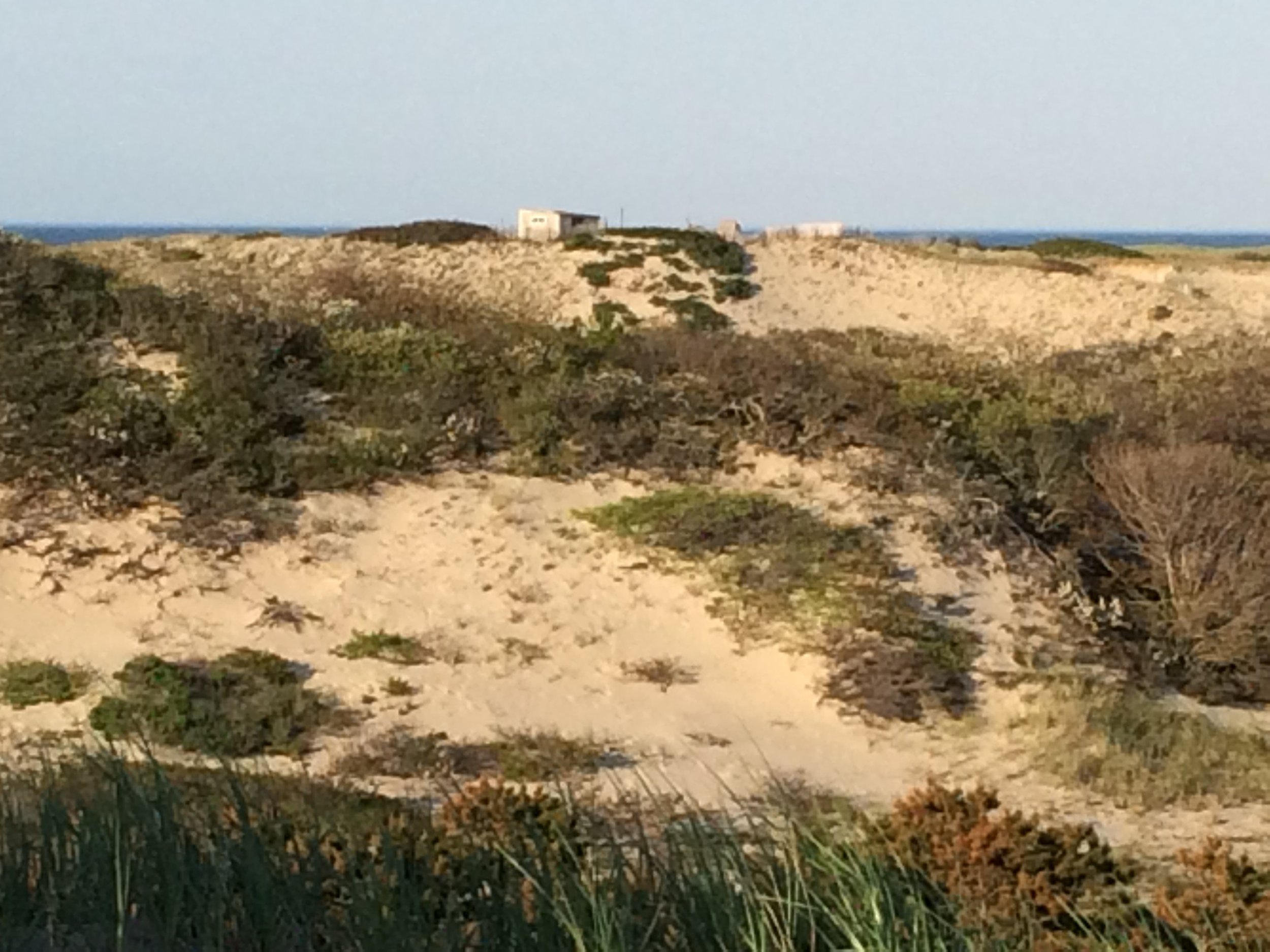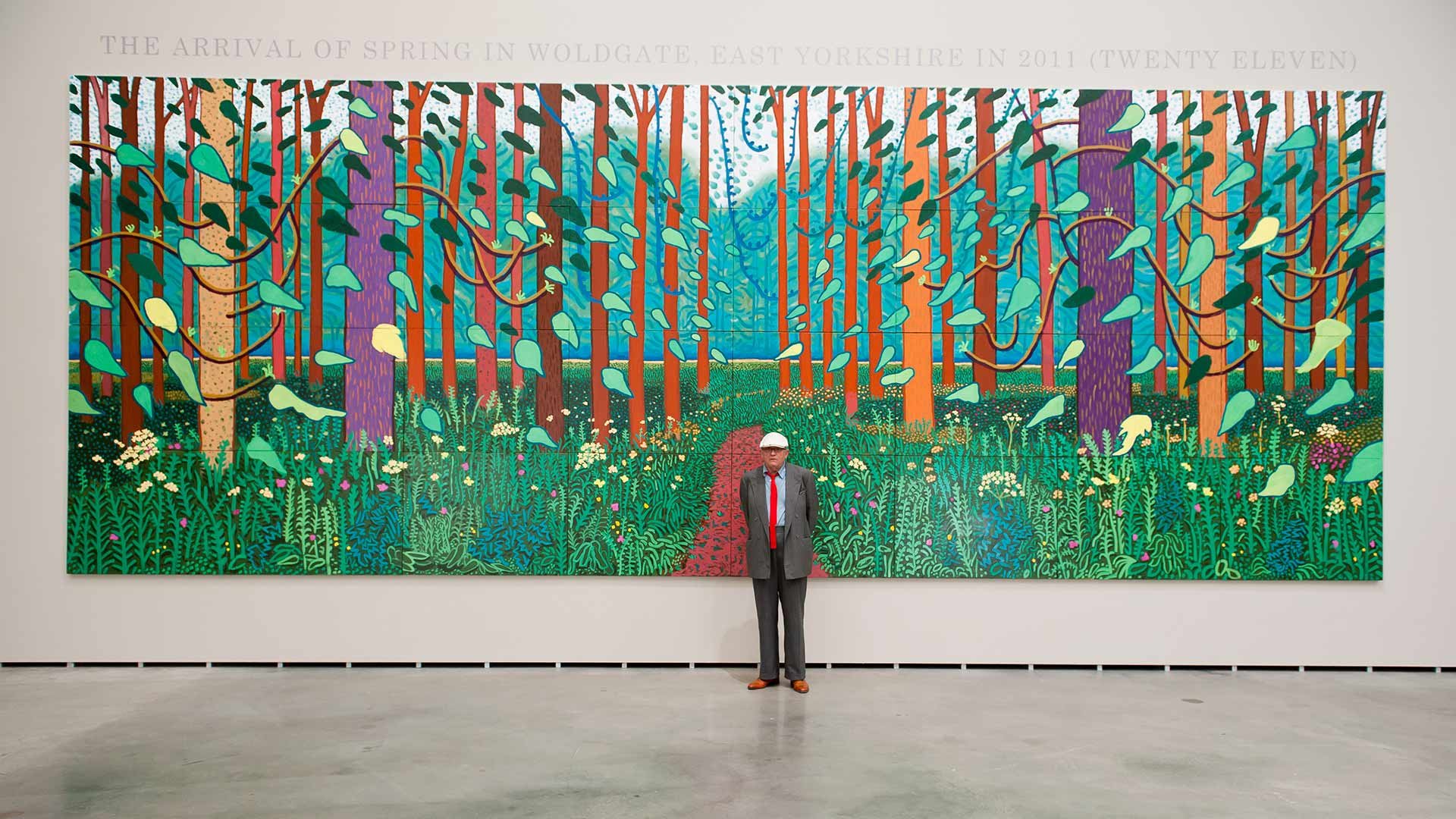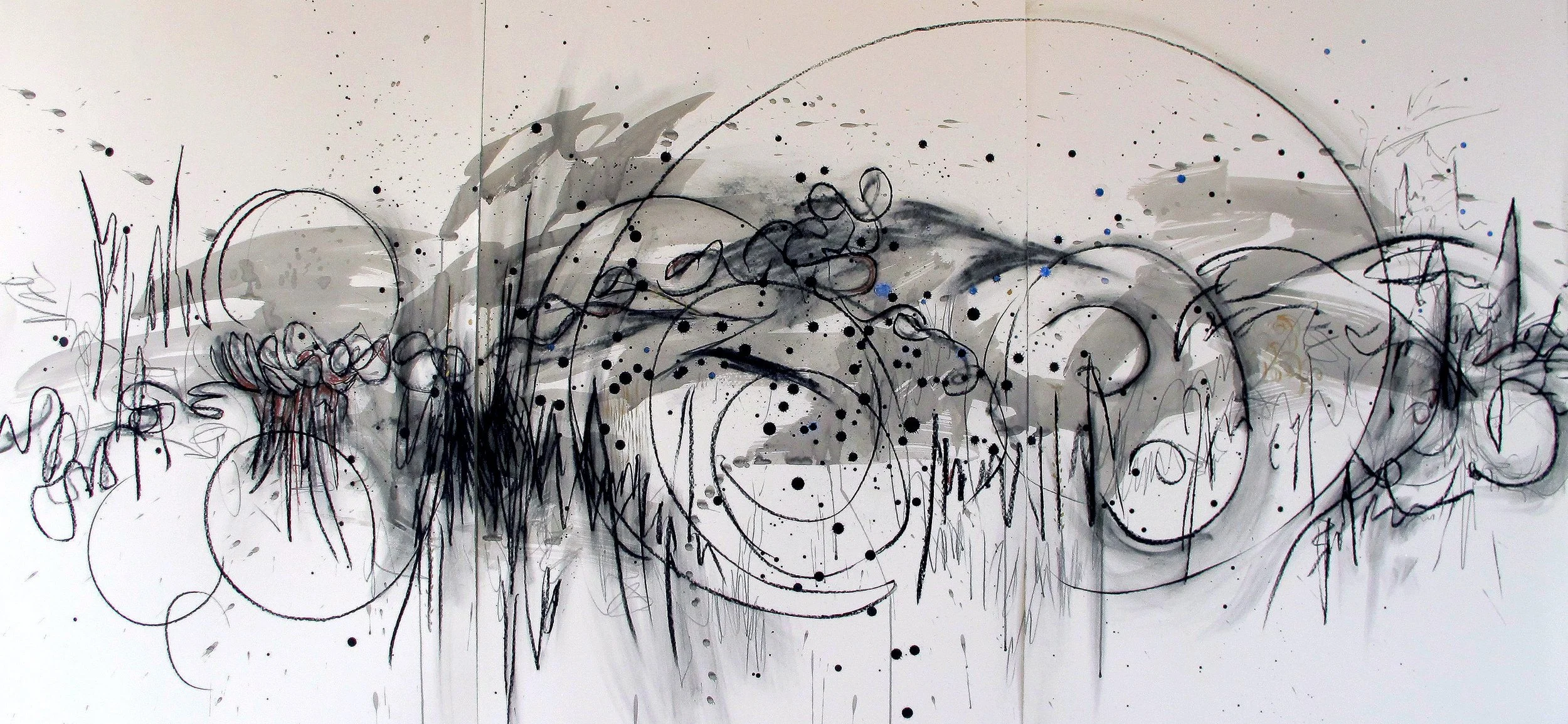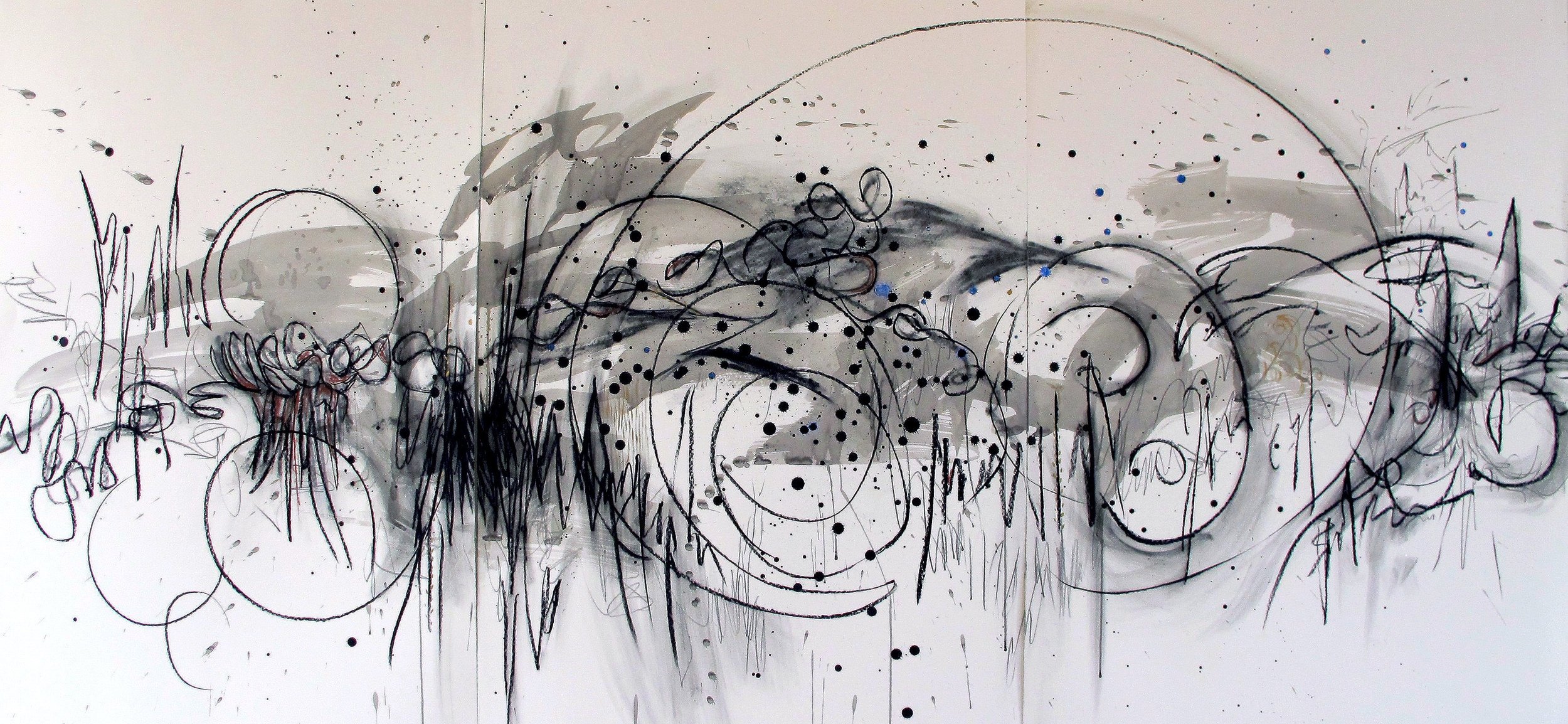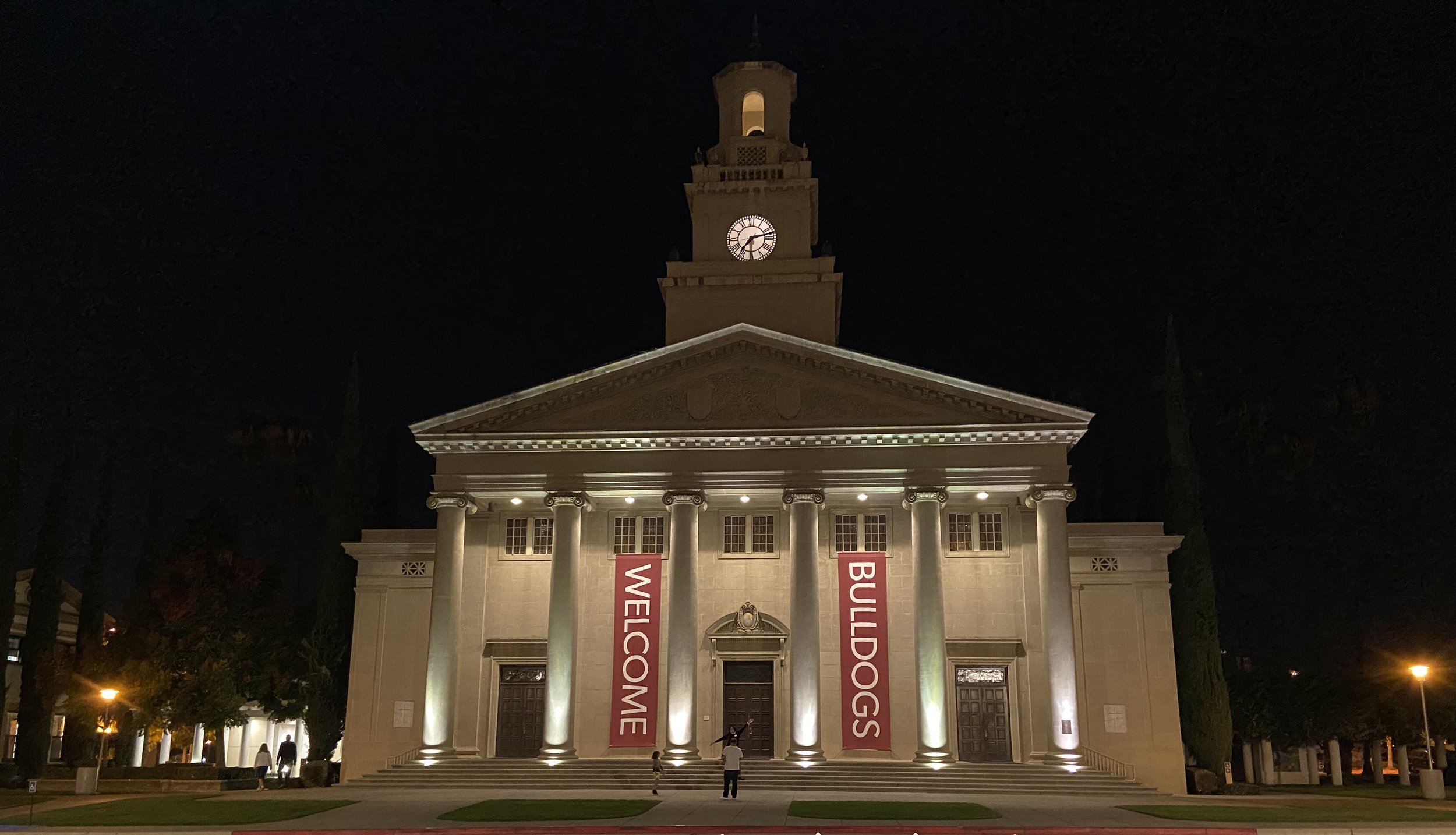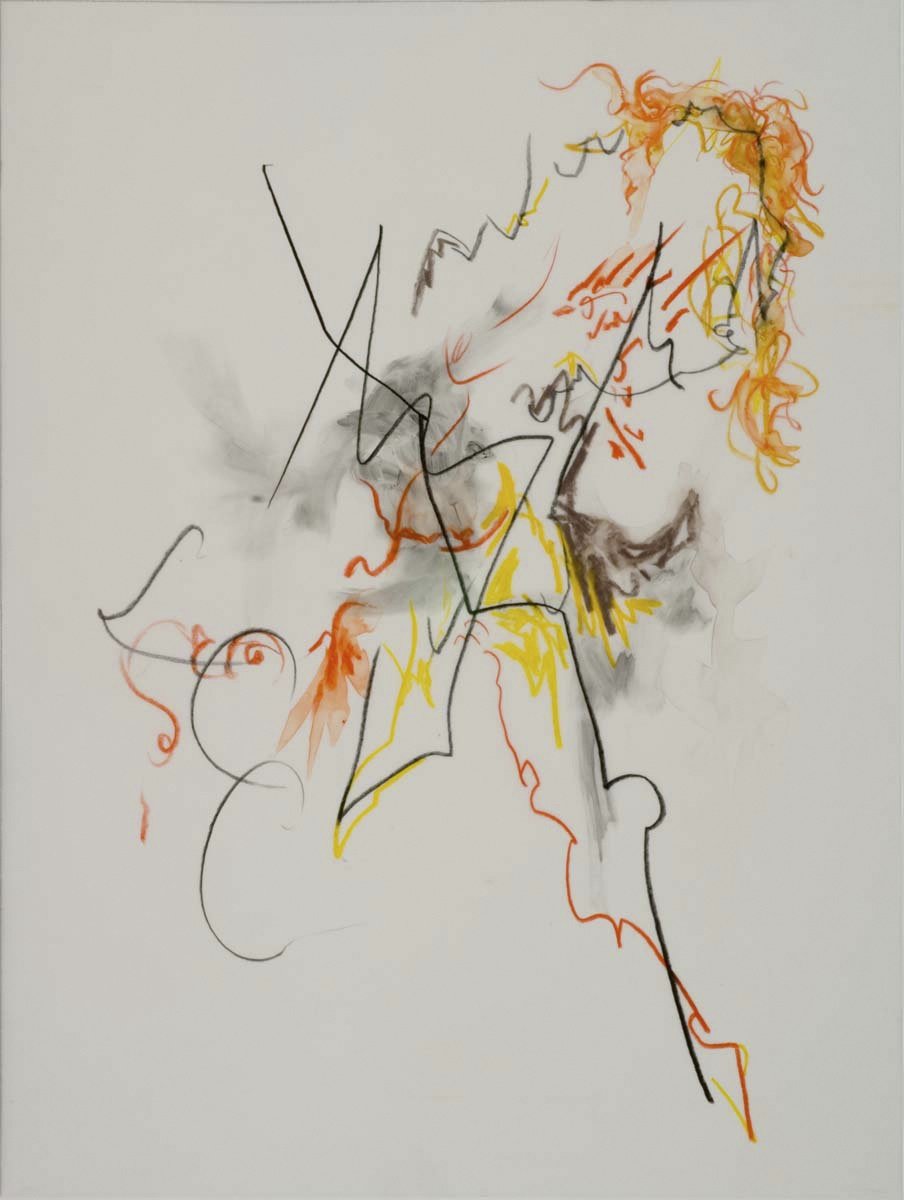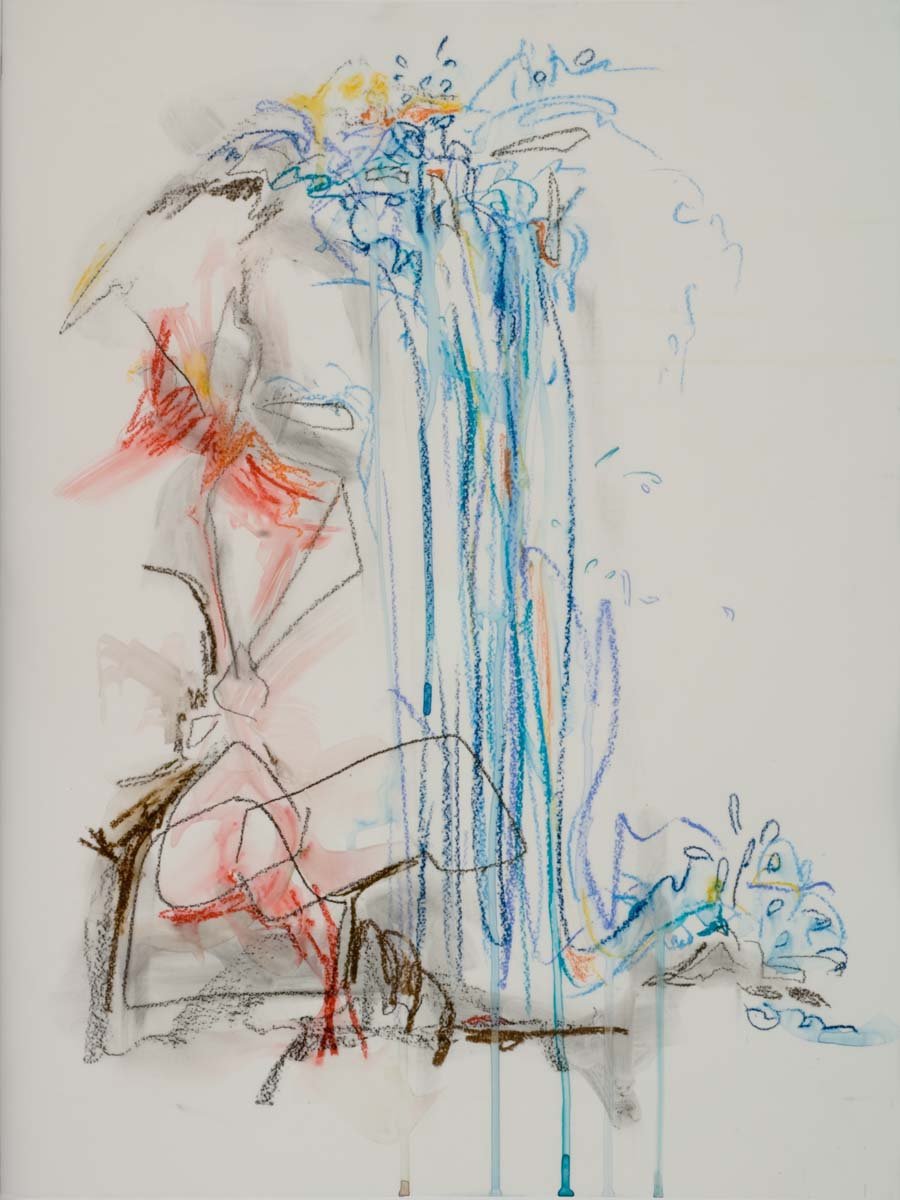Mid-Day Reeds_Arteles Creative Center Finland_____________Photo:Mary Ince
In my last blog post_Silence of the Dunes, I wrote about my experience of searching for visual silence during a residency in the Provincetown sand dunes. What a life changer that was. That posting reported what it was like to be in the dunes; and, what the experience was all about. The work was displayed at the Hudson walker Gallery the next year. I shared about what works I produced during that time. They were mostly music oriented. But, I still had an itch to delve more into the possibility of visually interpretating silence. As a result, I was able to secure a themed residency at the Arteles Creative Center in Finland.
The theme was Silence/Awareness/Existance. I couldn’t pass this one up. It happened to be in the four weeks of December. You know…. one of the snow months. If you’ve ever lived or played in the snow, you know how quiet it can be. Bingo_______SILENCE.
Studio_Arteles Creative Center Finland _________________________ Video: Mary Ince
Well, as we all know, climate change has altered our weather patterns. No snow for me. I’d planned my whole creative experience around the quietness of snow. But, an artist has all sorts of ideas in her head. I was able to find silence. It just wasn’t what I’d expected.
The next residency was a collaborative one with three other artists: drawing (me), sculpture, installation, and writing. These were women I had bonded with at my first residency that started this whole exploration_Vermont Studio Center.
After the collaborative residency, I was again at the Fine Arts Work Center in Provincetown MA. This is where I really concentrated on music and art. The Center is a very fertile ground for creating.
Over the intervening years between my first residency and this one, I seemed to be gravitating toward contemporary chamber music. I did a lot of listening, concert going, and reading about the subject. During one of the concerts by a wonderful chamber group, Camarata Pacifica here in southern California, a piece of music was played that got me all fired up. Lera Auerbach’s 24 Preludes for Viola and Piano has all of the marks I wanted to create a drawing to. I went home and tried to find a recording of it, but found that it was too new and hadn’t made it to a source that I could access. However, I did find her 24 Preludes for Cello and Piano. I bought the CD and played it over and over. I was mesmerized.
I, personally, found the music on this CD to be very stimulating. At times, hard to listen to, but beautifully complex and thought provoking. Not everyone found this true. You can read a review of the CD by David Kettle in The Strad Issue 1/2013.
Being someone who likes a challenge, I wondered how I was going to respond to all twenty four of the preludes. I thought about doing one large drawing, but settled on producing twenty four little “studies”. Each was a 5” x 5” study that I put in a grid. I realized after a while that I probably wasn’t going to ever go back and recreate each of these studies as a larger piece. The way I work with the music is that I hear it a certain way, see certain particular marks at that specific time I am hearing it. It is definitely an in the moment experience. I knew that listening to it in a different space in time, I’d see it completely differently. I listen for the marks, the splash, the pounding, the vibration, the gentle gliding.
Auerbach: 24 Preludes for Cello and Piano Op. 47 (read across the top row: top left is #1, bottom right is #24) Medium: ink, charcoal, graphite, paper ea. 5”x5”
I decided to leave the Preludes as a gridded one piece creation.
After finishing the preludes, I decided to listen to more of Lera Auerbach’s work. This wasn’t easy since she is an expremely prolific composer. (Works for orchestra, chamber, opera, solo, choral, and the list goes on.) Since I was loving the CD that I had bought in spite of what David Kettle had said, I found another piece on it that spoke to me. It was another piece for cello and Piano: Sonata for Cello and Piano. I chose the first movement because it seemed to present a lot of mark making sounds that I could interpret quite nicely.
For some reason, I decided to create this as a “blind” drawing. I had always admired Robert Morris’s Blind Time Drawings after seeing them years ago in Prato Italy.
I can’t explain how difficult it was having my eyes closed as I was using touch to guide me through listening to a musical piece. The experience was truly unique.
Blind Drawing to Lera Auerbach’s Sonata for Cello and Piano, no. 1
The time I spent creating at this residency was the most exciting and productive so far.
In my next blog post, I will explore with you a bit of a deviation on Drawing My Journey -Through Music and Marks



